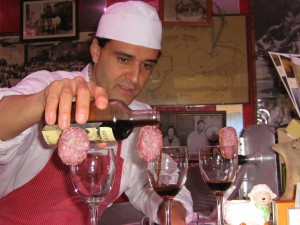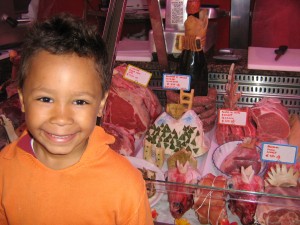I continue to be amazed by what’s happening in livestock genetic resources conservation. There is a burgeoning network of in situ conservation sites in Europe, for example, which is more than can be said for crops, really. 1 I’m talking about the European Livestock Breeds Ark and Rescue Net (ELBARN). I particularly like the rescue element:
ELBARN aims to change the status quo by creating a network of existing Ark Farms, by encouraging the development of new ones and by enhancing the system with the missing element: capacity to rescue animals that are both Rare Breeds and face slaughter or other immediate dangers.
Guidelines are available on how to market these Ark & Rescue Centres. There’s a map of the locations of the centres under the Ark Network tab in the menu bar. There’s also a database of breeds on the website.

